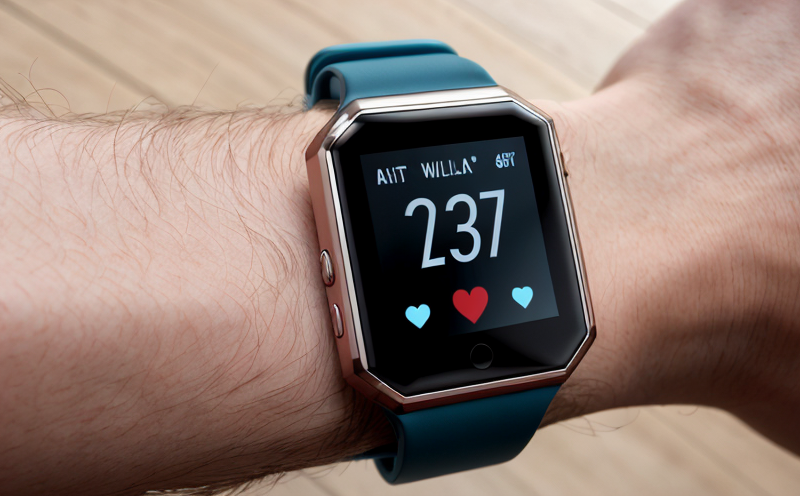IEC 60068-2-27 Shock Testing for Wearable Devices
The IEC 60068-2-27 standard is pivotal in the medical device sector, particularly for wearables and digital health devices. This international standard ensures that wearable devices are robust enough to withstand shocks encountered during everyday use or accidental situations. Compliance with this standard is crucial for manufacturers aiming to ensure product reliability and patient safety.
The IEC 60068-2-27 shock test simulates the impact of a drop onto a hard surface, which can occur when a wearable device falls from a user's wrist or pocket. The test evaluates whether the device maintains its functionality after exposure to specified levels of mechanical shock. This is particularly important for devices that are worn on the body and may experience rough handling.
The standard defines the parameters under which a specimen (the wearable device) should be tested, including the height from which it is dropped, the angle at which it strikes the surface, and the type of surface used. The test aims to mimic real-world conditions that might cause mechanical stress on the device. By adhering to this standard, manufacturers can demonstrate their commitment to quality assurance and safety.
The shock testing procedure involves placing the wearable device in a specific orientation, ensuring it is securely fastened or positioned to avoid movement during the drop. The device is then dropped from a defined height onto a flat surface made of a material specified by the standard. The impact force is measured using appropriate instrumentation. After each test, the device undergoes inspection and functional testing to ensure no damage has occurred.
The importance of this testing cannot be overstated in the medical device industry. Non-compliance can lead to product recalls and safety warnings, potentially harming public health. Compliance ensures that devices meet stringent quality standards set by regulatory bodies worldwide. It also builds consumer trust, enhancing brand reputation and marketability.
Understanding the context of IEC 60068-2-27 within the broader framework of medical device testing is essential for compliance officers and R&D engineers. This standard complements other tests that ensure electrical safety, electromagnetic compatibility (EMC), and biocompatibility, among others. Together, these standards form a comprehensive quality assurance program.
The next section will delve into why this test matters in the context of wearable devices, exploring its significance for both manufacturers and end-users.
Why It Matters
The IEC 60068-2-27 shock testing is crucial for ensuring that wearable medical devices are reliable and safe. These devices often experience mechanical stress during normal use, such as when they slip or fall from a user's wrist or pocket. The test simulates these conditions to evaluate the device’s resilience.
Manufacturers must comply with this standard to avoid potential product failures in the field. For instance, if a wearable device fails after a drop, it could lead to incorrect readings that might affect patient care. This is particularly concerning for devices used in critical healthcare settings where accurate data is essential for diagnosis and treatment.
From an end-user perspective, the importance of this test cannot be overstated. Knowing that their wearable device has undergone rigorous testing increases confidence in its performance and longevity. This trust translates into higher user satisfaction and brand loyalty.
The test also plays a vital role in regulatory compliance. Many countries require medical devices to meet international standards like IEC 60068-2-27 before they can be marketed or sold. Compliance ensures that the device is safe for use, meets quality expectations, and avoids costly recalls or legal issues.
Moreover, the test helps manufacturers identify potential design flaws early in the development process. By identifying weaknesses during testing, engineers can make necessary adjustments to improve product durability and reliability. This proactive approach not only enhances product quality but also reduces售后





